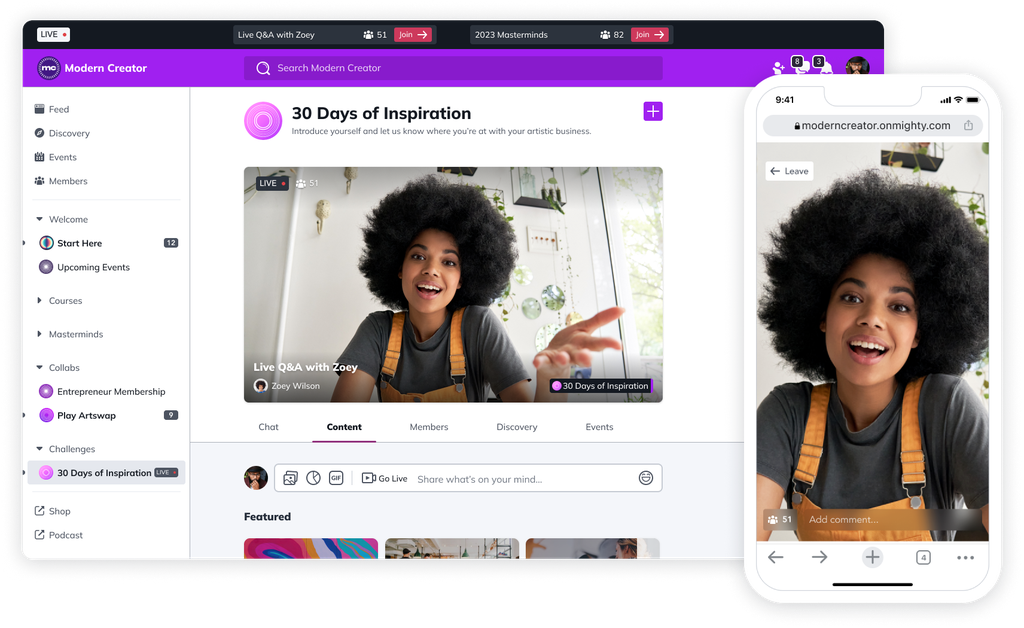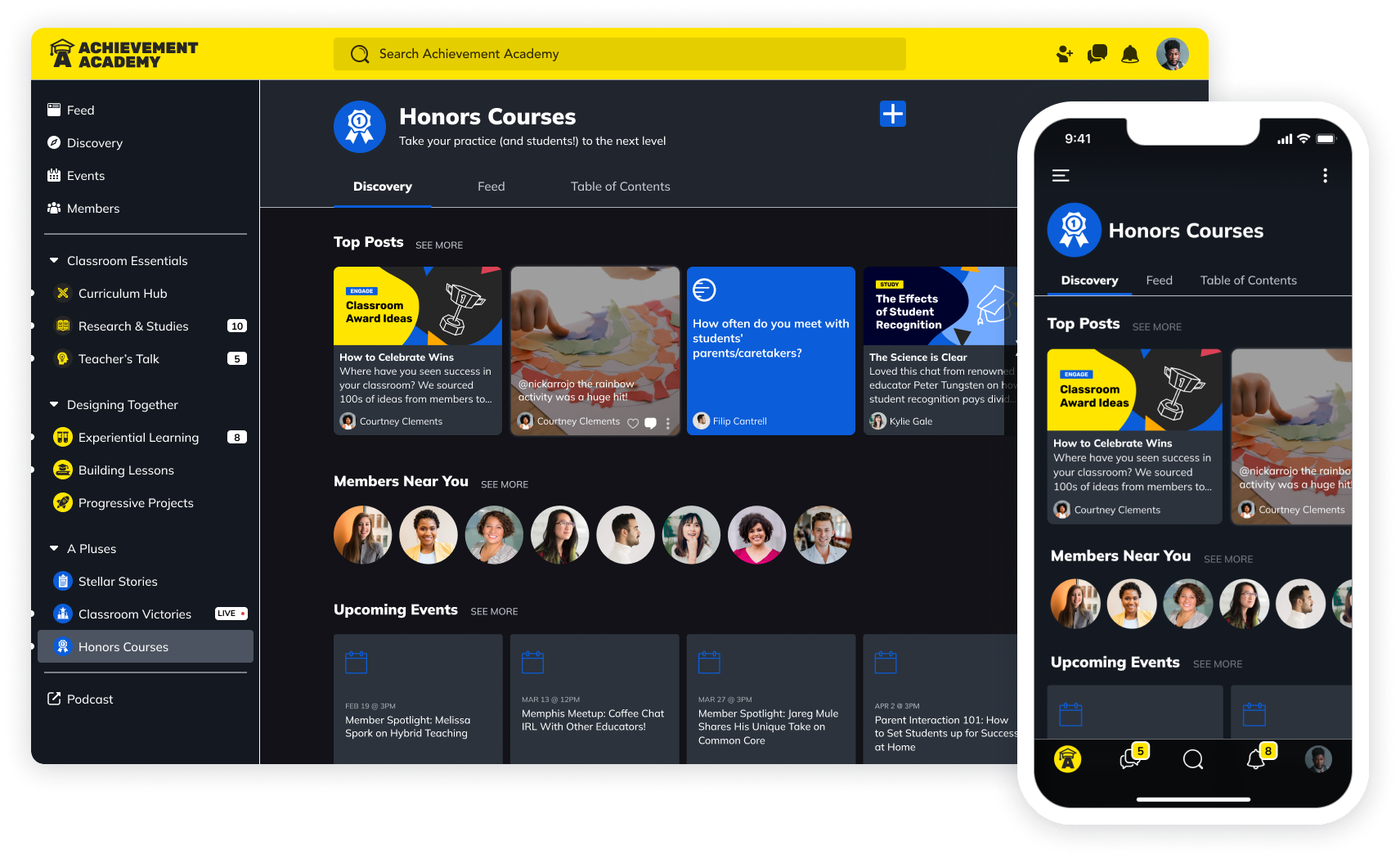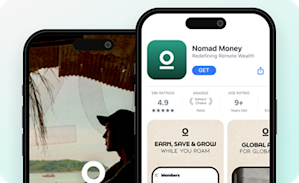Online Courses
Udemy vs. Thinkific: Which is Best in 2025?
If you’re trying to decide where to build your online course, we’ll compare these two popular options.
Author
Last Updated
February 6, 2025

Table of Contents
There are so many course platforms to choose from that, if you’re getting ready to build your online course, it’s probably a bit intimidating.
What should you look for? What features do you need? How do you understand the many different business options course platforms give you?
Even the many influencers and creator voices will swear by different options. Everyone has their own preference.
And this is just it. It's really hard to actually know which one you need. But if you’re doing your research for the best place to build your course, rest assured that there is an option for you! With a little bit of work, you can figure out the platform that will fit your personality and business style.
In this post, we’re going to talk about two popular options: Udemy vs Thinkific. Each has different pros and cons, and a different approach to building your course-based business. So we'll help you figure out which will work best for your style.
If you want more support in building your online course and community, come join OUR Mighty Community for free and meet other new and established community owners! We’d love to meet you. Join for free!
1. Udemy vs. Thinkific: What are they?
Udemy is an online course marketplace that has thousands of courses to choose from. It comes with a free course builder, and you can promote your course to the thousands of people who visit Udemy every day. Udemy takes a cut of your revenue for all courses sold through their marketplace, leaving you with 37% of it. And for students you bring directly to the site, you keep 97%.
Thinkific isn’t a course marketplace. Instead, it’s a course-building platform that you can create and host your own courses on. It comes with a drag-and-drop website and course creator and gives you a set of marketing tools to get your courses in front of people.
2. Udemy vs. Thinkific: How to decide?
If you’re trying to compare these two platforms, it can be tricky to properly understand what the differences are. So here are the 4 main things we’ll compare:
Course platforms
The first thing we will compare these two options on is the quality of the course-building platform. How much control do they give you over your course? How much customization do they let you have? We’ll rank them based on these features.
Business model
One of the clear differences between the two platforms is the way that each gives you a different business model, complete with different revenue and payout structures. You’ll need to decide which of these fits your style best.
Marketing options
Both Udemy and Thinkific come with ways to market your course. But again, each one operates on very different principles. We’ll compare how each of these lets you market your course to the people who need it.
Apps & access
Last, but not least, we'll compare each of these two platforms based on how they let you actually deliver your course to your students. This will definitely mean comparing the access via a mobile app, which is a total necessity for a modern course builder.
3. Udemy vs. Thinkific: Course platforms
When it comes to course platforms, Udemy and Thinkific are very different beasts. Udemy doesn’t offer a fancy course creator or many customization options. This is because your course needs to match the many other courses in the Udemy library, so there needs to be a certain amount of uniformity in style.
The course creator itself is pretty basic, giving you a place to upload and map out your course content.
But with that said, the course creator is pretty easy to use, and there are lots of helpful hints along the way.
The result – not a huge surprise – is a course that looks like every other course on Udemy… although there are a few options to customize the course with your own landing page and course images.
Thinkific gives you a more comprehensive course builder, with options to customize pretty much everything. (The downside is that it doesn’t come with a built-in audience, which we’ll talk about below).
You can add your lessons and build custom pages to sell and support your course. The page-builder itself is an easy, drag-and-drop option, meaning that course creation is pretty intuitive.
Neither platform really shines in terms of what they give you when compared to other LMSs, but each has a good basic course platform. Both of them are stronger in other areas than the course platform itself.
4. Udemy vs. Thinkific: Business model
If you’re comparing Udemy vs. Thinkific, it’s important to understand that the two monetize differently. Understanding the differences is key to getting a business model you’re happy with.
Udemy is totally free to build and host your course on. But, you pay when people choose to take your course. This means that, with every sale you make, Udemy will take a portion of your revenue to pay for your right to use the site. For customers that purchase your course via a link that you share, you get to keep 97% of your revenue. For those that discover your course on Udemy’s platform, you will keep only 37%.
Some creators like this approach, since it could mean capturing revenue that you wouldn't otherwise have from the course marketplace. Some feel that this costs them too much, since self-hosted platforms let you keep most, if not all of your revenue.
Thinkific works on a subscription model. Instead of paying a portion of every sale to the platform, you will pay a flat rate to build and host your course there. They do have a free plan, which lets you create and host a basic course without benefitting from many of the functions of the platform. Otherwise, you pay a flat rate for access, depending on which features you choose.
While both of these platforms take a very different approach to monetization, the one that’s right for you will depend on how you choose to build your business. If you want to pay for the built-in audience of Udemy, you might consider it worthwhile to lose a portion of your revenue every month – although remember, the more successful you are the more costly it gets!
If you want to build and host on Thinkific, you will pay a flat rate no matter how many students you have. If you’re only building a course, this might mean you’ll need to keep selling to justify the costs of hosting there. If you were working on a community or membership model, then you can unlock some recurring revenue and the monthly cost becomes a bit more viable – more on this below.
5. Udemy vs. Thinkific: Marketing options
As we’ve sort of hinted at already, Udemy and Thinkific give you very different options when it comes to marketing your courses.
Udemy comes with very few built-in marketing features, BUT as we’ve already talked about, it does give you access to thousands of students who show up everyday looking for courses to buy. This can work for some people, and might be worth sacrificing the more extensive marketing options that other platforms give you.
Since Thinkific is self-hosted, it gives you the option of customizing your own landing pages. They have different templates for this you can choose from to build from.
Thinkific also comes with different marketing tools like coupon codes, sales “call-to-action” buttons you can place on another site, and an affiliate program so that you can enlist others to help sell your course (usually for a percentage of your revenue).
6. Udemy vs. Thinkific: Apps & access
Last, but DEFINITELY not least, let’s talk about apps and access. The thing is, accessibility for your course via a native mobile app isn’t really a perk anymore – it’s becoming a must. As less and less people even have laptops or desktop computers, having a great app that your students can learn with makes it way more likely your course-based business will be successful.
Udemy does have an app that works for both Android and Apple, that gives you the ability to take your courses with you. The app comes with some neat features, for example, the ability to cast to a TV (although some users have reported that the app is fairly clunky & that the casting doesn’t work well).
Unfortunately, Thinkific doesn’t have an app at all. This means that, in terms of access, Thinkific is missing one of the most important features your students will need, which is a shame.
The one thing that Thinkific does have in terms of access is that it can be integrated with a WordPress site. However, since WordPress plugins aren’t necessarily the best way to build a course or membership site either, this doesn’t mean much.
Conclusion - Want another option?
The marketplace platform for Udemy is great, but it will cost you a lot. The self-hosted platform for Thinkific gives you lots of customization options and marketing features, but is missing an app.

There is another option. Mighty Networks is a powerful cultural software platform that lets you mix courses, community, content, and commerce. And with our flexible Spaces, you can add features like live streaming, live events, messaging and chat, discussion forums, member profiles, and more!
Not only can you get the benefit of course revenue, but you can also charge for community membership and get recurring monthly revenue. And with the principles of Community Design™, you can build a community around your course that makes it even more valuable and helps it grow through word of mouth.
It comes with an amazing app that works for every device and is included in every plan, plus a whole set of other features like live streaming, polls, integrated events, subgroups, and more.

Don’t take our word for it. You can try it absolutely free for 14 days, no credit card required, and see what you can do with it.
Ready to start building your course?
Ready to start building your community?
Start a free 14-day trial to explore Mighty—no credit card required.
More like this
Join Mighty Community
Learn the principles of Community Design™ (and see them in action) alongside thousands of creators and entrepreneurs. It's free to join!

Online Courses
Creating a Course
Teaching a Course
Course Platforms
Selling a Course
Communities & Memberships
Community Platforms
Managing a Community
Building a Community
Growing a Community
Monetizing a Community
Content Creation
Creators & Entrepreneurs
Monetization
Content Creation
Starting a Business
Website Builders
Creating & Managing a Website
Events
Event Platforms
Hosting & Marketing Events
Branded Apps
Creating a Mobile App
Coaching Apps
Community Apps
Coaching
Mastermind Groups
Starting a Coaching Business
Coaching Platforms
Filter by Category
Online Courses
Communities & Memberships
Creators & Entrepreneurs
Events
Branded Apps
Coaching
Build a $1 Million Community
This free masterclass went viral—sign up to learn why.

























